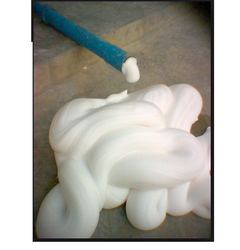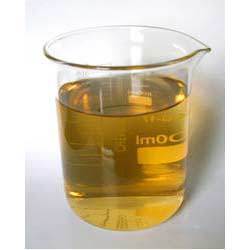Professional solutions on concrete addtives, Concrete Foaming Agent, Superplasticizer, CLC Blocks Additives, and foaming machine
(Analysis of the causes of early cracks on the surface of concrete in summer construction)
Crack generation is more prominent in the summer construction of concrete with a large horizontal surface of concrete. For example, summer construction of cement concrete pavement, cement concrete bridge deck, and bridge deck pavement, etc., have appeared to varying degrees of early cracks before maintenance.
The main characteristics of summer construction of large horizontal surface concrete.
1. Hot climate, high temperature
2. Raw materials: high temperature of the constituent materials of concrete due to high temperatures, sun exposure, used to form a concretemixture of sand, stone materials with high temperature; new factory cement, often high temperature, due to the hot climate, the heat in the cement is not easy to disseminate, coupled with the impact of the sun and other factors, making the temperature of the cement is high, the temperature of certain cement can be as high as 70 ℃.
3.High temperature of the concrete foundation or formwork and other supports
4.Large exposed surface and great influence by environment
5.Variable climate
The main reasons for cracks on the surface of the concrete
1.The surface water evaporation rate is large, resulting in water loss on the surface of freshly poured concrete. The formation of plastic and shrinkage cracks on the surface of the concrete loss of water and plastic shrinkage is the main reason for cracks.
When the evaporation rate of the concrete surface is more than 1kg/m2/h, its surface is prone to plastic contraction cracks. Air temperature, concrete mix temperature, relative humidity, and wind speed are the main factors affecting water evaporation from the concrete surface. The higher the temperature of the concrete itself, the smaller the relative humidity of the air, and the higher the wind speed, the greater the rate of water evaporation from the surface of the concrete. In summer, due to the higher temperature, the heat of hydration of the cement in the concrete is produced in a shorter period, which promotes the elevation of the temperature of the concrete in the early stage.
Relevant data show that when the temperature is 14 ℃, the first 24h after mixing concrete produces 43% of all the heat of hydration; when the temperature is 30 ℃, the first 24h after mixing concrete produces 62.5% of all the heat of hydration.
The high temperature of coarse and fine aggregates and cement itself, on the one hand, increases the temperature of early concrete. On the other hand, it concentrates the heat of cement's hydration. The high temperature of the environment makes the heat in the concrete not easy to disseminate. Thus the overall temperature of the concrete is much higher than that of concrete constructed in other seasons.
Under the influence of dry wind in summer, the high-temperature concrete increases the evaporation rate of water on the surface, leading to rapid water loss and serious plastic shrinkage. At the same time, the high temperature inside promotes the rapid hydration of cement and hardening of concrete. The combined effect of severe plastic shrinkage on the surface and internal constraints caused plastic shrinkage cracks on the concrete surface.
Water evaporation not only caused surface cracks. And water loss makes the concrete surface cement hydration water insufficient, affecting the surface concrete hardening and strength growth.
2. Concrete section temperature difference makes the surface thermal cracks
Concrete in summer construction, due to the foundation or formwork by the sun and other effects, the temperature is higher than the ambient air temperature. Its height makes the hydration rate of cement in concrete with its adjacent parts. The rate of hydration heat generation is greater than the surface, increasing the temperature difference between the surface and the internal concrete. When the difference between the surface and internal temperatures is more than 15 ℃, it is easy to produce surface thermal cracks.
Foundation or formwork by the influence of high-temperature concrete, but also easy to produce expansion deformation, and large surface concrete thickness is generally small, the lower part of the expansion deformation on the surface of the concrete contraction to produce reverse constraints, so that the tensile stress sentence increases, the surface cracks caused by the adverse effects.
3. The high temperature on the concrete microstructure produces unfavorable effects
It is generally believed that the base microstructure change is negligible when the concrete temperature is below 50 ℃. When the concrete temperature exceeds 70 ℃, its microstructural changes are unfavorable. The impact of high temperature of mass concrete is often ignored.
In the summer construction of general concrete structures, due to air temperature, material temperature, formwork or foundation temperature, and the impact of the concentrated release of the heat of hydration of cement, resulting in the temperature rise will often make its temperature exceeds the maximum temperature of the unfavorable, due to the early age of the concrete resistance to deformation capacity is small, the concrete microstructural changes not only affect the overall strength of the concrete but also prone to the formation of thermal cracks on the surface.
4. The climate is variable so that the concrete surface is easy to be hit by the cold
Due to the summer construction, climate changes, such as sudden rainfall, will make the temperature drop suddenly. The sudden drop in the surface temperature of the concrete will make the surface temperature contraction and production of surface temperature shrinkage cracks.
5. Increase in the amount of cement and water-cement ratio in construction increases the plastic shrinkage deformation of concrete.
Summer construction in the mixing, transport, and other processes due to evaporation and other factors easily causes water loss in the concrete mixture. It makes it easier to reduce the ease of use. Therefore, it is easy to increase the amount of cement and water-cement ratio in construction to improve the ease of concrete, and the increase in the amount of cement and water-cement ratio is more likely to cause contraction when the contraction is restrained. It is easy to form cracks.
6. In the construction of hardened concrete at high temperatures, the solid formation temperature determines the concrete's base length. When the whole cools down, it is from this length and temperature contraction, and it is very easy to produce the overall temperature contraction cracks, such as the production of pavement broken plate.
Concrete additives Supplier
TRUNNANO is a reliable concrete additives supplier with over 12-year experience in nano-building energy conservation and nanotechnology development.
If you are looking for high-quality concrete additives, please feel free to contact us and send an inquiry. (sales@cabr-concrete.com)
We accept payment via Credit Card, T/T, West Union, and Paypal. TRUNNANO will ship the goods to customers overseas through FedEx, DHL, by air, or by sea.
(Analysis of the causes of early cracks on the surface of concrete in summer construction)








